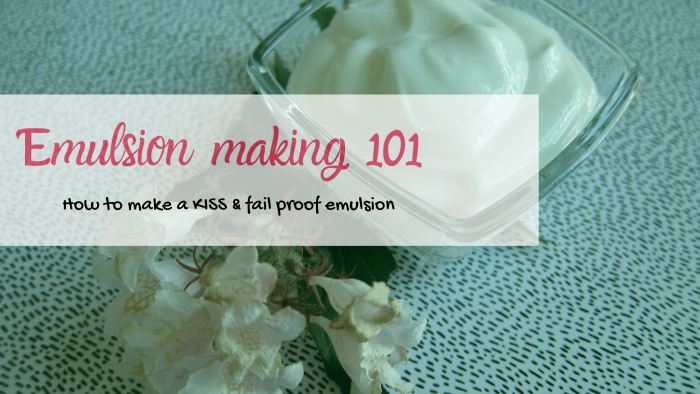
Donnerstag, 18. Juni 2020
Emulsion making 101
Some of you have asked for tutorials and posts about emulsion making and although we are going to have detailed posts about the principles of emulsion making and emulsion stabilization in our membership portal, we don't want to leave non-members alone and this is why we have started this free training series about emulsion making,
Today I'm sharing a fail-proof and KISS emulsion with Plantasens HE20 which is one of our best sold O/W emulsifiers. For the sake of simplicity, I didn't even use any gum or stabilizer or any essential oils in this formulation. Probably the most complicated part is the pH measurement and adjustment but I'll come to that just in a moment.
These are some of our previous posts:
Creamy skin cleansers: an overview
A "KISS" facial cleansing milk
How to make a shower cream
Texture you can not forget: an emulsion with Plantasens HE20
After sun body lotion with a Zanzibarian twist
Back to basics: How to make a KISS emulsion with Plantasens HE20
We have tons of blog posts about this emulsifier on our blog and I have used it in various complex formulations and ways (such as hot-hot-cold) but for this post I'm following a very conventional hot-hot process.
This is the approach I take when testing a new emulsifier. I Make some KISS emulsions and vary the percentatge and the nature of the oil, change the stabilizer, change the preservative and study the impact of each change on the texture, appearance, skin feel and stability of the emulsion. Most of skincare formulation students and DIY beginners take a different approach. They start with a super complicated formulation and add all of their precious and expensive ingredients to the emulsion and then when it doesn't work they don't know where to start and how to find the culprit.
About pH adjustment
I know by experience that the preservative I'm using reduces the pH and I know by experience that reducing the pH with lactic acid at the end is much easier to increase the pH with Arginine. This is why I add just a little bit Arginine to the water phase at the beginning and then after adding the preservative I reduce the pH with lactic acid to the exact range I need. (I hope this makes sense)
I'm using moringa oil in this formulation because, in addition to its excellent feel it has a high content of phytosterols and a low iodine value and that makes it a perfect oil for hot process. Despite its intensive yellow colour, the colour of the finished emulsion is a luxurious white.
In the water phase, I'm using a chelator (to boost the preservative efficacy and impart antioxidant properties), panthenol (as a humectant) and the skin prebiotic to nourish and boost the skin microbiome.
The oil phase is even simpler and consists of the oil (only moringa oil), the emulsifier and tocopherol as the antioxidant.
Formulation
| Phase A | |
| Distilled water | to 100,0% |
| Natural chelator PA-3 | 0,1% |
| Panthenol | 1,0% |
| Skin prebiotic | 3,0% |
| L-Arginine | 0,2% |
| Phase B | |
| Plantasens HE20 | 5,0% |
| Moringa oil | 20,0% |
| Natural tocopherols | 0,3% |
| Phase C | |
| Versatile preservative TBG | 1,0% |
| Lactic acid | to adjust the pH |
Procedure
1- Measure phase A and B in two separate heatproof containers. Phase A needs a little bit of stirring before heating
2- Heat both phases in a water bath between 75-80 C
3- When both phases have reached the temperature and the oil phase is completely melted and homogeneous stop heating and add the oil phase to the water phase.
4- Homogenize for a while and then start stirring while the emulsion cools down.
5- After the emulsion has reached RT, prepare a 10% dilution and measure the pH. By adding arginine we have increased the pH deliberately. In our case the pH was above 8 and that's OK because our preservative reduces the pH.
6- Add the preservative, prepare another 10% dilution and remeasure the pH. In our case the pH was 5,8 and we used just a little bit of lactic acid (1 drop 40% for a 100 gr batch) to bring the pH to 5,3.
7- Take your micro kit and stability samples and fill the rest in a suitable container
Watch this video for a short tutorial.
I'll be back soon and we'll jazz up this emulsion in the coming tutorials

